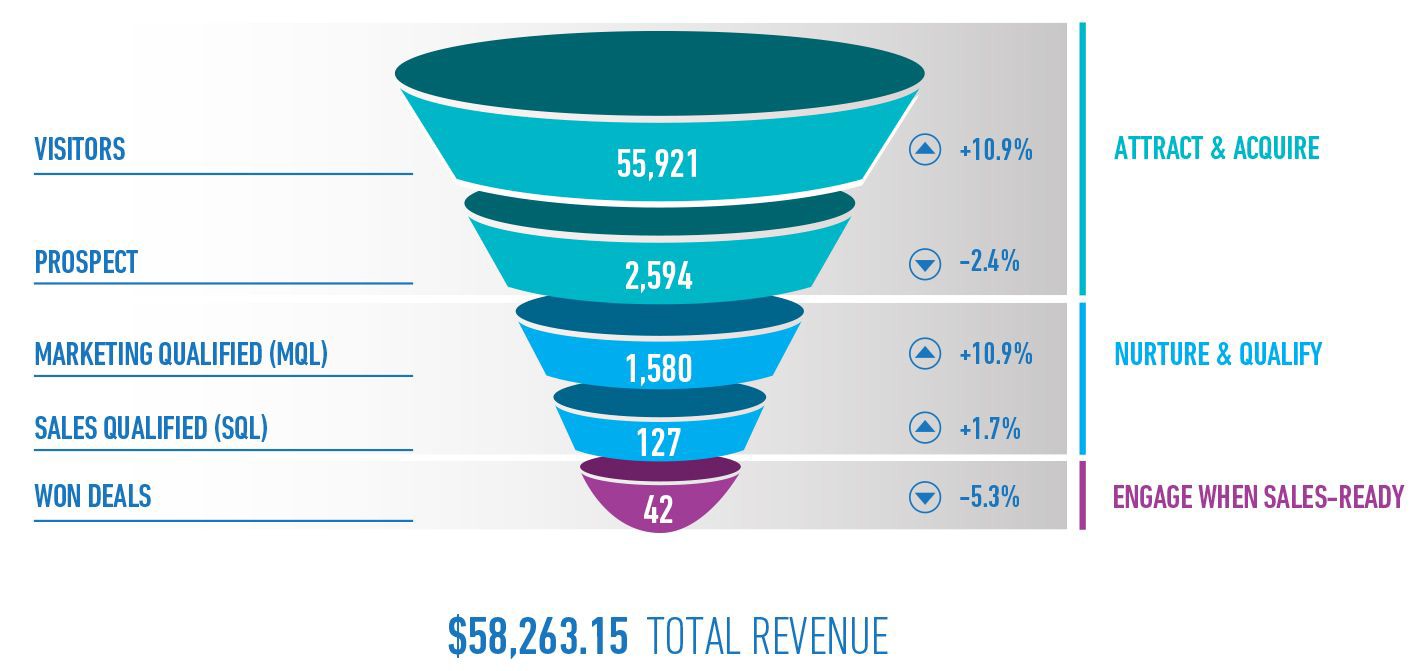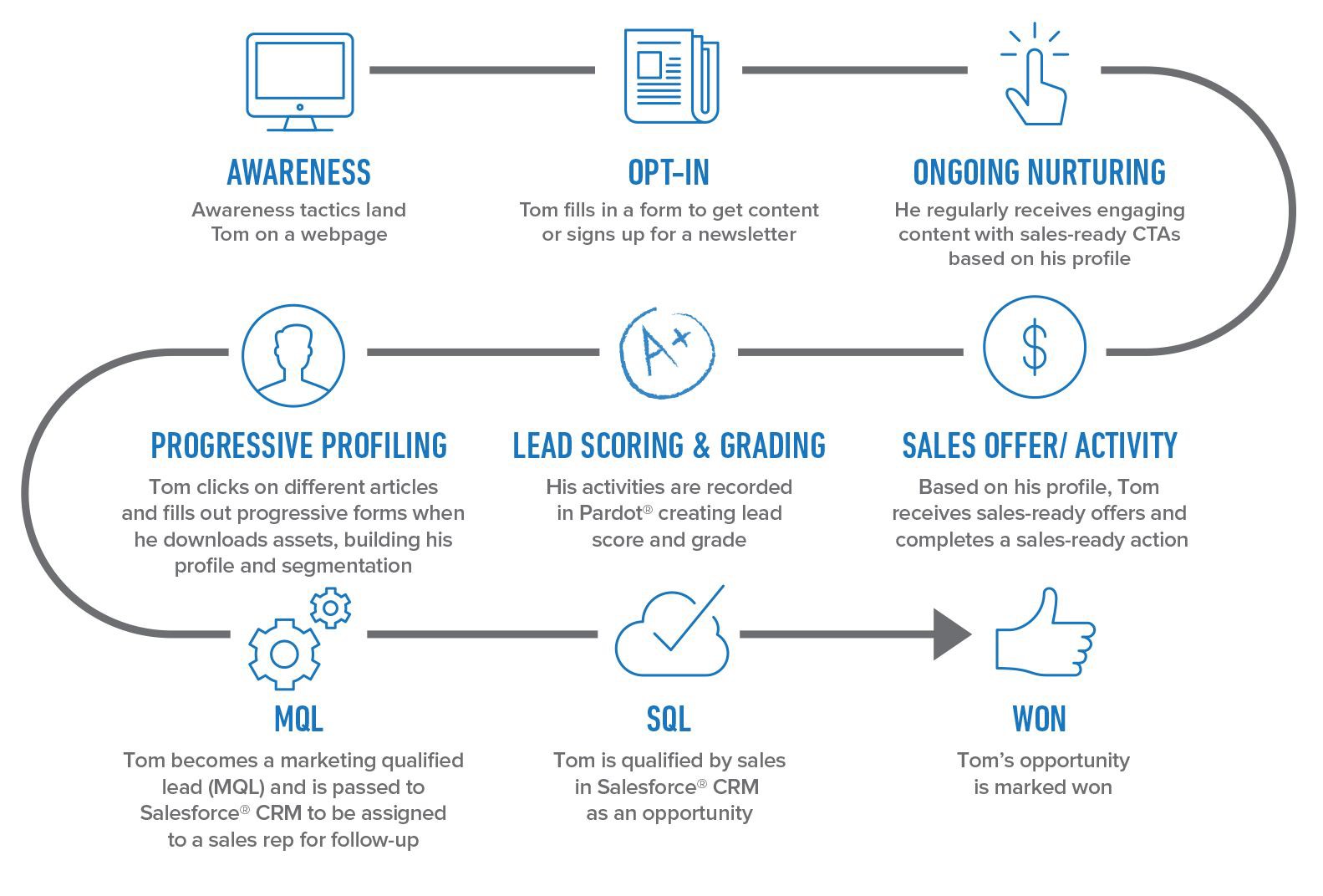How your B2B website can source and influence more revenue pipeline
These days, every B2B marketing leader working in a growth-oriented company is focused on impacting revenue as materially as possible. No longer is it enough to refresh your company’s brand or logo, pump out some new sales collateral, and run some field marketing events to connect with customers and prospects.
Executives want to know how much of their company's revenue pipeline is being sourced and influenced by marketing. As such, your marketing team is working hard to connect every dollar they spend to lead generation and nurturing. That’s fairly straightforward when it comes to marketing campaigns and programs, but measuring the return on investment of budget and time is sometimes less clear when building and maintaining your company’s website.
Here are three ways your B2B marketing team can ensure your company’s website is sourcing and influencing more marketing and sales pipeline:
Tip 1: Set measurable pipeline objectives and metrics for your site
Without clear objectives keeping you on track, your website efforts can quickly run astray. By defining and prioritizing what measurable results you expect to generate through your website—just like you would for campaigns and programs—it’ll become easier to focus your efforts and resources on the website tasks, metrics and results that directly affect your pipeline and impact your revenue.
Push yourself beyond the metrics that typically come out of web analytics tools. Looking at number of visitors, time on site, pages per visit, and other similar aggregate metrics can help you diagnose issues with your site, but those diagnostic metrics don’t measure pipeline impact or business value.
You should be measuring your website’s contribution to your marketing and sales pipeline. Prioritize the metrics you need to move most or first based on the current state of your pipeline, whether it’s top-heavy, middle-heavy, or sparse all the way through. There’s no need to get fancy here, so let’s keep it simple. There are only four key pipeline metrics you need to worry about: Visitors, prospects, MQLs and SQLs.

Once you’ve prioritized your website pipeline metrics, take baseline measurements of how you’ve been performing recently (even if the numbers are low or zero). As much as you might want to compare to some sort of industry benchmark for performance evaluation, the best comparison is over your own baseline. Your goal is to move those numbers in a positive direction, with growth or lift every reporting period.
Now that you’ve defined what success looks like and how you’ll measure it, the next step is to align your website execution to deliver against those pipeline impact metrics.
Tip 2: Let visitors choose their pathways by offering tiered CTAs and eliminating dead ends
Take an objective look at your website through the lens of prioritized pipeline impact objectives and metrics to help you identify opportunities for improvement. You should have calls-to-action (CTAs) in your prime digital real estate that will drive your top priority pipeline impact metric.

For example, if your top priority is converting site visitors to opted-in prospects in order to fill the top of your pipeline, make sure you have one or more highly visible offers and CTAs that are relevant, valuable and compelling to first-time visitors.
Or maybe your focus is on the middle of your pipeline, attempting to re-engage dormant prospects in your database and drive them back to your website where you can triage
sales-ready leads for immediate follow-up. Nurturing those that are not yet sales-ready can also help to better segment and qualify them for future outbound campaigns. In this case, your
prime digital real estate should feature a variety of pathways that connect your buyer’s needs with the products/services you offer that help solve their problems, as well as sales-ready CTAs like requesting a custom demo or scheduling a meeting.
In all, keep the number of required form fields, clicks and other “hoops” to a minimum, and proportionate to the perceived value of the offer, in order to reduce friction and maximize conversion.
In addition to letting your visitors choose their own adventure, ensure that you have multiple choices or pathways on every page of your website: cross-link to other relevant pages, feature related blog posts and resources, showcase customer success stories. But, whatever you do, don’t lead your visitor into a dead end where they’re sure to bounce off your site.
Tip 3: Offer a trackable user experience that supports your lead segmentation and qualification efforts
Now that you have the right user experience pathways, offers and CTAs in your prime digital real estate to drive your prioritized pipeline impact metrics, you can focus on learning from the website engagement data you’re collecting to build more targeted, relevant, and valuable offers and CTAs.
Your marketing automation platform will now contain a wealth of activity history and behavioral data that can be used to create all sorts of different segments for targeting, testing and customization. That can translate into email campaigns, dynamic content blocks, personalized offers, and more.
If you’ve organized your site navigation and content into sections that align to customer needs and pains, your aggregate site engagement data will also show you where you’re getting more or less traction with your messaging, value proposition and content. Now you can make informed decisions about iterating on what you’re saying and sharing, how you’re saying it and to whom.
These tips may sound complex or complicated—especially if you’re still seeing your corporate website as a digital version of a piece of marketing and sales collateral.
If you need to reset how you look at your site, try looking through the eyes of your buyers, seeking the information they need to answer their questions and solve their problem. You’ll see they aren’t looking for a digital brochure that’s all about your company, your products and services, your customers, and how to contact you; they’re looking to define their problem, and to find someone who understands their challenges and can help guide them to the right solution.
With that approach in mind, you’ll start to see opportunities to engage buyers in a more meaningful and productive way, and—when you add clearly defined, measurable objectives—you’ll see your website positively influence your marketing and sales pipeline.
Curious how your company’s website stacks up? Contact the team at Brainrider to arrange a walk-through of your website with you and your team to see what you’re doing well and how you could improve.



































